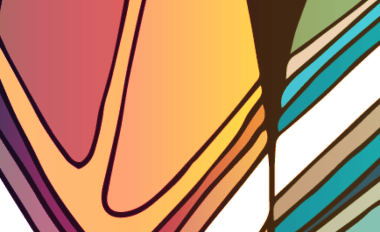Engagement with the arts can have powerful impacts on health, wellbeing and the strengthening of communities…The role of the arts in exploring and communicating social concerns, giving voice to hidden issues and allowing self-expression is also a major contributor to health. 43
Aboriginal Peoples have the right to practice and revitalise their Cultural Traditions, to develop manifestations of their culture including performing arts.44
Art and Performance has a powerful impact on the social, emotional, physical and cultural wellbeing of all Australians. Victoria has a vibrant Aboriginal Art and Performance sector. In addition to the positive wellbeing outcomes of a thriving Arts and Performance sector, there are significant economic opportunities for People who work in the sector.
Song and performance allow us to maintain memory and language. Being creative enables us to pay respect to our traditional practices, our Ancestors, our Culture in ways that may have been considered lost but that have always been present.
The Torch provides art, cultural and arts vocational support to Aboriginal offenders and ex-offenders in Victoria. Through a range of programs and initiatives it enables artists, both emerging and established, within the prison system to find pathways to wellness and future financial stability through art.
The Short Black Opera is a national Indigenous not-for-profit organisation, based in Melbourne. They provide training and performance opportunities for Aboriginal and Torres Strait Islander performing artists. One of their projects is the Ensemble Dutala, Australia’s first Aboriginal and Torres Strait Islander chamber ensemble.45
Ilbijerri is a Woiwurrung word meaning ‘Coming Together for Ceremony’. The ILBIJERRI Theatre Company is one of Australia’s leading theatre companies, creating works by First Nations artists. Just recently, in July, ILBIJERRI put on a special online showing of Jack Charles v The Crown.46
The Koorie Heritage Trust is currently showing several online exhibitions including, an exhibition of Daen Sansbury-Smith’s work, called Black Crow47 and a group show called Affirmation, a photographic exhibition that explores the concept of truth in the context of place, Ancestral identity and cultural pride. The group show includes photographs by Paola Balla, Deanne Dilson, Tashara Roberts and Pierra Van Sparkes.48
VicHealth, an independent statutory body reporting to the Minister for Heath, has a health promotion framework for Aboriginal Victorians. The framework identified the Arts as a priority setting for action. VicHealth has supported a number of community driven arts initiatives including:
- The Black Arm Band: an ensemble of musicians drawn from Aboriginal communities across Australia.
- Songlines Aboriginal Music Corporation: Victoria’s peak Aboriginal music body.
- The Fitzroy/Collingwood Parkies DVD History Project: the project involves collating into a documentary, interviews with nine community elders, film footage and historical resources about the Aboriginal People known as the Fitzroy/ Collingwood Parkies group.
On the national level, the Indigenous Visual Arts Industry Support program, run by the Department of Infrastructure, Transport, Regional Development and Communications supports around 80 Indigenous arts centres and a number of art fairs, regional hubs and industry service organisations around Australia. In Victoria in this financial year, they are funding the Aboriginal Corporation for Frankston and Mornington Peninsula Indigenous Artists, the Gallery Kaiela Incorporated and the Koorie Heritage Trust.
Given the health, cultural and economic opportunities derived from a prosperous Arts and Performance sector, it is important to build the capacity of this sector. As evidenced above, there are many projects currently being actively pursued. Nevertheless, the
sector relies too heavily on the enthusiasm and commitment of its talent to paper over the significant administrative and financial challenges of building a career in the arts. The casualisation of the workforce for example created financial uncertainty for arts workers even before the current pandemic.
In addition, Aboriginal and Torres Strait Islander creatives must contend with the short comings of Australia’s intellectual property laws in the protection of their Indigenous Cultural and Intellectual Property. The very purpose of IP law is to incentivise creativity. However, when cultural designs, stories and dances can be copied and used by People with no connection to the source community, and without permission of Traditional Owners, without any legal repercussions, this can make Aboriginal creatives weary of sharing their knowledge and creative output. This economic lens doesn’t even begin to address the significant risk of cultural harm that can occur when cultural knowledge is used without consent, or misappropriated.
Discussion question: How do communities’ benefit from a vibrant and sustainable arts and performance sector?
- What can be done to strengthen the Arts and Performance sector?
- What measures would empower Aboriginal creatives to share their creative output?
- How can we build culturally safe environments in the Arts and Performance Sector?
Updated

